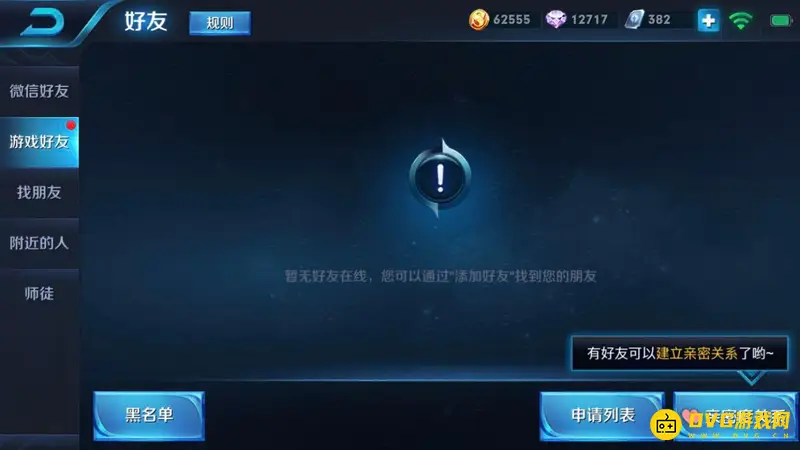C# 中 LISTVIEW用法
时间:2011-06-11 来源:骄阳08
C# 中 LISTVIEW用法
//增加项或列(字段)
ListView1.Clear;
ListView1.Columns.Clear;
ListView1.Columns.Add;
ListView1.Columns.Add;
ListView1.Columns.Add;
ListView1.Columns.Items[0].Caption:='id';
ListView1.Columns.Items[1].Caption:='type';
ListView1.Columns.Items[2].Caption:='title';
ListView1.Columns.Items[2].Width:=300;
Listview1.ViewStyle:=vsreport;
Listview1.GridLines:=true; //注:此处代码也可以直接在可视化编辑器中完成,
也可写成以下这样
begin
with listview1 do
begin
Columns.Add;
Columns.Add;
Columns.Add;
ViewStyle:=vsreport;
GridLines:=true;
columns.items[0].caption:='进程名';
columns.items[1].caption:='进程ID';
columns.items[2].caption:='进程文件路径';
Columns.Items[0].Width:=100;
Columns.Items[1].Width:=100;
Columns.Items[2].Width:=150;
end
end;
//增加记录
with listview1.items.add do
begin
caption:='1212';
subitems.add('hh1');
subitems.add('hh2');
end;
//删除
listview1.items.delete(0);
//从数据库表里读取数据写入Listview
var
Titem:Tlistitem; //此处一定要预定义临时记录存储变量.
begin
ListView1.Items.Clear;
with adoquery1 do
begin
close;
sql.Clear;
sql.Add('select spmc,jg,sl from kcxs');
Open;
ListView1.Items.Clear;
while not eof do
begin
Titem:=ListView1.Items.add;
Titem.Caption:=FieldByName('spmc').Value;
Titem.SubItems.Add(FieldByName('sl').Value);
Titem.SubItems.Add(FieldByName('jg').Value);
next;
end;
//删除
ListView1.DeleteSelected;
//如何取得ListView中选中行的某一列的值
procedure TForm1.Button2Click(Sender: TObject);
begin
ShowMessage(ListView1.Selected.SubItems.Strings[1]); //返回选中行第三列中的值
end;
showMessage(listView1.Selected.Caption); //返回选中行第一列的值.
第1列的值: -->>> ListView1.Selected.Caption
第i列的值(i>1):-->>> ListView1.Selected.SubItems.Strings[i]
ListView1.Items.Item[1].SubItems.GetText); //取得listview某行某列的值
Edit2.Text := listview1.Items[i].SubItems.strings[0]; //读第i行第2列
返回选中行所有子列值.是以回车符分开的,你还要从中剥离出来你要的子列的值。
showMessage(ListView1.Selected.SubItems.GetText);
ListView 简单排序的实现
ListView 排序
怎样实现单击一下按升序,再单击一下按降序。
function CustomSortProc(Item1, Item2: TListItem; ColumnIndex: integer): integer; stdcall;
begin
if ColumnIndex = 0 then
Result := CompareText(Item1.Caption,Item2.Caption)
else
Result := CompareText(Item1.SubItems[ColumnIndex-1],Item2.SubItems[ColumnIndex-1])
end;
procedure TFrmSrvrMain.ListView1ColumnClick(Sender: TObject;
Column: TListColumn);
begin
ListView1.CustomSort(@CustomSortProc,Column.Index);
end;
===============================================================
//增加
i := ListView1.Items.Count;
with ListView1 do
begin
ListItem:=Items.Add;
ListItem.Caption:= IntToStr(i);
ListItem.SubItems.Add('第 '+IntToStr(i)+' 行');
ListItem.SubItems.Add('第三列内容');
end;
//按标题删除
for i:=ListView1.Items.Count-1 downto 0 Do
if ListView1.Items[i].Caption = Edit1.Text then
begin
ListView1.Items.Item[i].Delete(); //删除当前选中行
end;
//选中一行
if ListView1.Selected <> nil then
Edit1.Text := ListView1.Selected.Caption;
// listview1.Items[Listview1.Items.Count -1].Selected := True;
// listview1.Items[Listview1.Items.Count -1].MakeVisible(True);
procedure TForm1.Button2Click(Sender: TObject); // 选择第一条
begin
listview1.SetFocus;
listview1.Items[0].Selected := True;
end;
procedure TForm1.Button1Click(Sender: TObject); // 选择最后一条
begin
listview1.SetFocus;
listview1.Items[Listview1.Items.Count -1].Selected := True;
end;
//这是个通用的过程
procedure ListViewItemMoveUpDown(lv : TListView; Item : TListItem; MoveUp, SetFocus : Boolean);
var
DestItem : TListItem;
begin
if (Item = nil) or
((Item.Index - 1 < 0) and MoveUp) or
((Item.Index + 1 >= lv.Items.Count) and (not MoveUp))
then Exit;
lv.Items.BeginUpdate;
try
if MoveUp then
DestItem := lv.Items.Insert(Item.Index - 1)
else
DestItem := lv.Items.Insert(Item.Index + 2);
DestItem.Assign(Item);
lv.Selected := DestItem;
Item.Free;
finally
lv.Items.EndUpdate;
end;
if SetFocus then lv.SetFocus;
DestItem.MakeVisible(False);
end;
//此为调用过程,可以任意指定要移动的Item,下面是当前(Selected)Item
ListViewItemMoveUpDown(ListView1, ListView1.Selected, True, True);//上移
ListViewItemMoveUpDown(ListView1, ListView1.Selected, False, True);//下移
TListView组件使用方法
引用CommCtrl单元
procedure TForm1.Button1Click(Sender: TObject);
begin
ListView_DeleteColumn(MyListView.Handle, i);//i是要删除的列的序号,从0开始
end;
用LISTVIEW显示表中的信息:
procedure viewchange(listv:tlistview;table:tcustomadodataset;var i:integer);
begin
tlistview(listv).Items.BeginUpdate; {listv:listview名}
try
tlistview(listv).Items.Clear;
with table do {table or query名}
begin
active:=true;
first;
while not eof do
begin
listitem:=tlistview(listv).Items.add;
listitem.Caption:=trim(table.fields[i].asstring);
// listitem.ImageIndex:=8;
next;
end;
end;
finally
tlistview(listv).Items.EndUpdate;
end;
end;
ListView使用中的一些要点。以下以一个两列的ListView为例。
→增加一行:
with ListView1 do
begin
ListItem:=Items.Add;
ListItem.Caption:='第一列内容';
ListItem.SubItems.Add('第二列内容');
end;
→清空ListView1:
ListView1.Items.Clear;
→得到当前被选中行的行的行号以及删除当前行:
For i:=0 to ListView1.Items.Count-1 Do
If ListView1.Items[i].Selected then //i=ListView1.Selected.index
begin
ListView1.Items.Delete(i); //删除当前选中行
end;
当然,ListView有OnSelectItem事件,可以判断选择了哪行,用个全局变量把它赋值出来。
→读某行某列的操作:
Edit1.Text := listview1.Items[i].Caption; //读第i行第1列
Edit2.Text := listview1.Items[i].SubItems.strings[0]; //读第i行第2列
Edit3.Text := listview1.Items[i].SubItems.strings[1]; //读第i行第3列
以次类推,可以用循环读出整列。
→将焦点上移一行:
For i:=0 to ListView1.Items.Count-1 Do
If (ListView1.Items[i].Selected) and (i>0) then
begin
ListView1.SetFocus;
ListView1.Items.Item[i-1].Selected := True;
end;
不过在Delphi6中,ListView多了一个ItemIndex属性,所以只要
ListView1.SetFocus;
ListView1.ItemIndex:=3;
就能设定焦点了。
Delphi的listview能实现交替颜色么?
procedure TForm1.ListView1CustomDrawItem(
Sender: TCustomListView; Item: TListItem; State: TCustomDrawState;
var DefaultDraw: Boolean);
var
i: integer;
begin
i:= (Sender as TListView).Items.IndexOf(Item);
if odd(i) then sender.Canvas.Brush.Color:= $02E0F0D7
else sender.Canvas.Brush.Color:= $02F0EED7;
Sender.Canvas.FillRect(Item.DisplayRect(drIcon));
end;
/////////////////////////////////////
string list = "";
for (int i = 0; i < this.listView1.CheckedItems.Count; i++)
{
if (this.listView1.CheckedItems[i].Checked)
{
list += this.listView1.CheckedItems[i].Text + ",";
}
}
///////////////////////////////////////////
如何用C#代码选中listview的复选框
listView1.Items.Add("Goods", 0);
listView1.Items[0].Checked = true;
或者
System.Windows.Forms.ListViewItem listViewItem1 = new
System.Windows.Forms.ListViewItem("Goods");
listViewItem1.Checked = true;
listView1.Items.Add(listViewItem1);
//////////////////////////////////////////
C#的listView控间打开时默认选中第一行的属性或代码?
就是C#里窗体的ListView控件 在打开窗体后ListView里默认选中第一行 的代码或属性
我知道:
private void Form1_Load(object sender, EventArgs e)
{
listView1.Focus();
listView1.Items[0].Selected = true;
}
这样就行了,简单吧,呵呵!~
////////////////////////////////////
在打开窗体后ListView里默认选中第一行 的代码或属性,可以在两个地方去做:
1 窗体的构造中
2 窗体的Load中Form1_Load
然后通过设置listView1.Items[0].Selected = true; 即可默认选中第一,
但是前提是你的listView1控件必须创建了,同时设置了数据项才可以。
否则会取listView1.Items[0]时会报错,最好之前做判
断,如if(listView1.Items.Count>0),避免出现异常
//////////////////////////////////////////////////////
我在ListView外放了个按钮用来检测它前面的checkBox有没选中!
private void button1_Click(object sender, EventArgs e)
{
//选中行大于0时(选中多行时默认是判断选中的第一行)
if (listView1.SelectedItems.Count > 0)
{
//用来显示checkBox到底有没选中,true为真
MessageBox.Show(listView1.SelectedItems[0].Checked.ToString());
}
}
listView1.SelectedItems[0].Checked即为你所需要的值!!本人经过测试!通过!
///////////////////////////////
c# winform 如何读取 listview里的每一条数据
listview中有rows属性,rows属性中有columns属性。
////////////////////////////////////////////////
遍历ListView然后执行INSERT语句啊。。。
Web用:
foreach(ListViewDataItem lvdi in ListView1.Items)
{
}
WinForm用:
foreach(ListViewItem lvi in ListView1.Items)
{
}
/////////////////////////////
C# 获取listview 单元格
listView1.Items[listView1.SelectedIndices[0]].SubItems[0].Text
listView1.Items[listView1.SelectedIndices[0]].SubItems[1].Text
很简单,用下面这句话就可以了,测试过的
取得选中行的第一列时:
string str = listView1.FocusedItem.Text;
或者
string str = listView1.FocusedItem.SubItems[0].Text;
取得需中行的第二列时:
string str = listView1.FocusedItem.SubItems[1].Text;
依次类推...
你可以通过rows遍历行,然后通过columns遍历列。
如何点击获得ListView中的项的值
if(this.listView1.FocusedItem != null)
{
string str =this.listView1.FocusedItem.SubItems[0].Text;
}
写在SelectedIndexChange事件里
//////////////////////////////////
选中项的文本值:this.listView1.SelectedItems[0].Text;
选中项的子项的文本值
this.listView1.SelectedItems[0].SubItems[0].Text;(SubItems[0]表示选中项的第
一个子项,第二个子项就是SubItem[1],第三个就是SubItems[2]....以此类推)










